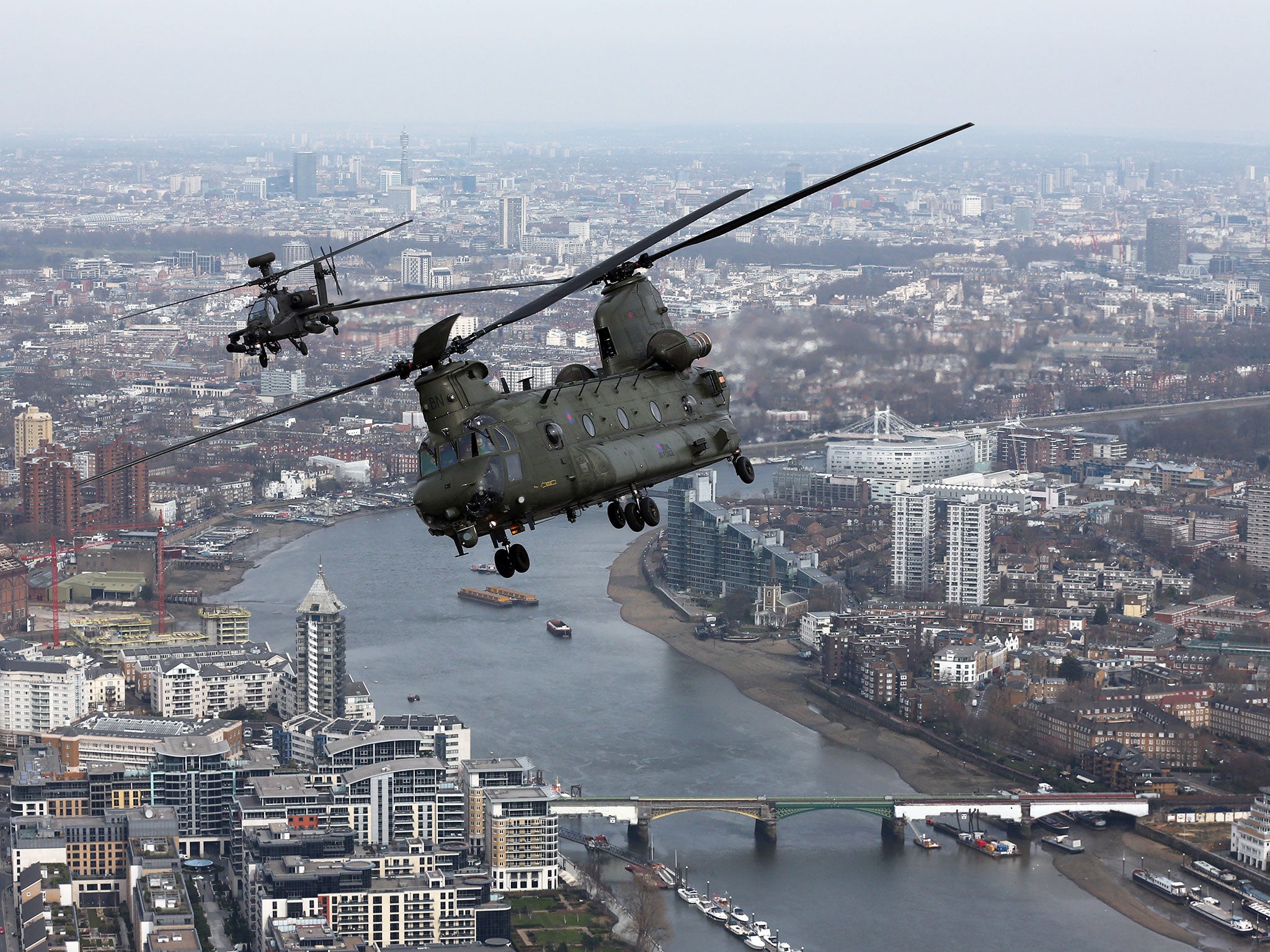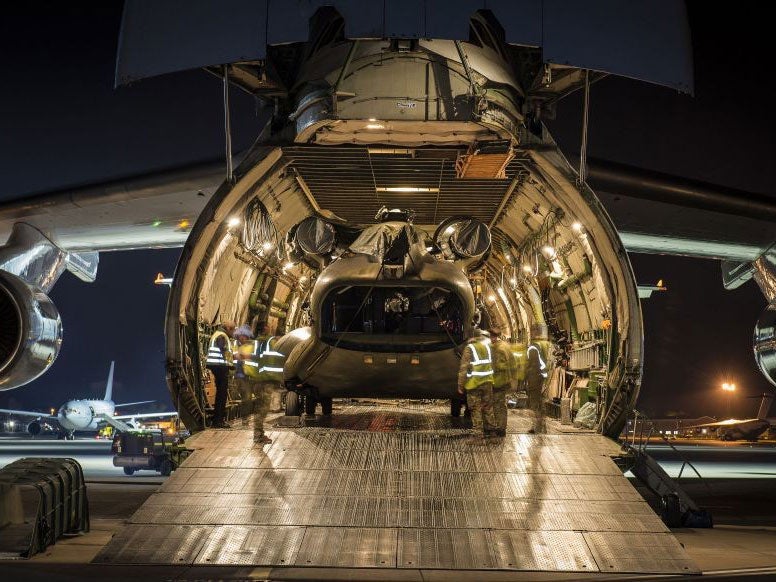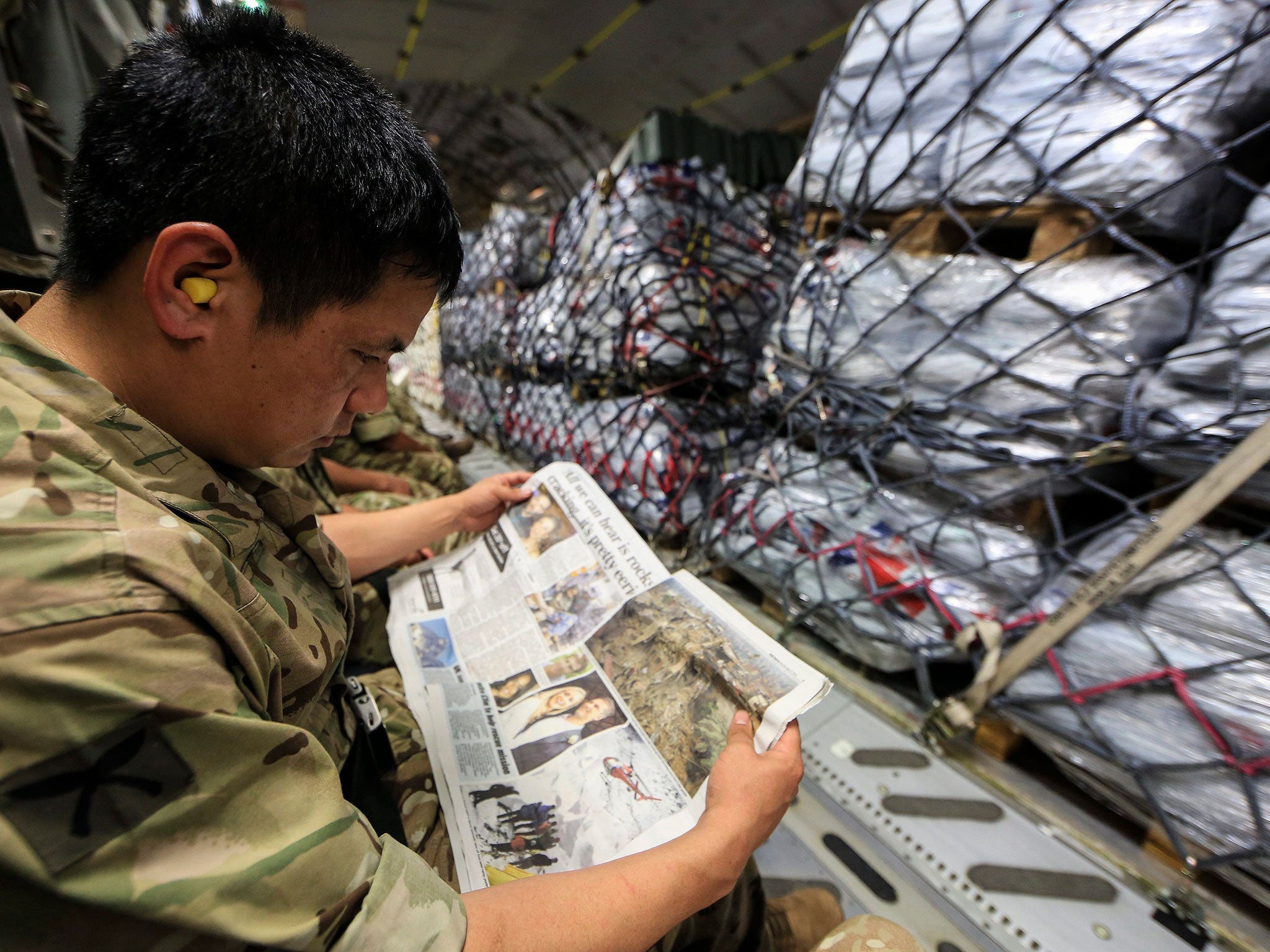Nepal earthquake: British Chinooks banned from delivering aid in case they blow roofs off
The helicopters have been stranded in Delhi since Nepali officials said they were unwanted in the aid effort because they could cause structural damage

Your support helps us to tell the story
From reproductive rights to climate change to Big Tech, The Independent is on the ground when the story is developing. Whether it's investigating the financials of Elon Musk's pro-Trump PAC or producing our latest documentary, 'The A Word', which shines a light on the American women fighting for reproductive rights, we know how important it is to parse out the facts from the messaging.
At such a critical moment in US history, we need reporters on the ground. Your donation allows us to keep sending journalists to speak to both sides of the story.
The Independent is trusted by Americans across the entire political spectrum. And unlike many other quality news outlets, we choose not to lock Americans out of our reporting and analysis with paywalls. We believe quality journalism should be available to everyone, paid for by those who can afford it.
Your support makes all the difference.British Chinook helicopters sent to help the earthquake recovery effort in Nepal have been stopped from entering the country because of claims their powerful propellers could blow roofs off and smash windows.
The Government hailed their deployment at the end of last month, saying the RAF aircraft would help ferry people and aid supplies across Nepal’s mountainous terrain.
International Development Secretary Justine Greening said they would reach remote communities in “desperate need” after they were cut off by the magnitude 7.8 earthquake on 25 April.

That disaster, which killed more than 8,000 people and destroyed half a million homes, was followed by a huge magnitude 7.3 aftershock yesterday that left at least 67 more people dead in the country and toppled already fragile buildings.
Instead of helping international aid workers get to thousands of homeless and displaced Nepalis, the British Chinooks are currently stranded in Delhi along with around 100 military air crew, engineers and support staff sent with them.
The distinctive twin rotor aircraft were dismantled for the journey and loaded on to huge Anatov cargo planes to be re-assembled on arrival in Kathmandu.
But now the Ministry of Defence (MoD) is facing the prospect of having to fly them back home after more than a week sat on the tarmac.
A spokesperson for Nepal’s foreign ministry told the AFP news agency the helicopters could not fly over earthquake-hit areas because of potential structural damage caused by their powerful propellers.
"We have told the British authorities that they cannot fly their Chinook helicopters here because our technical team says they are likely to damage the houses and other buildings in the Kathmandu valley," she added.
"We are worried about broken windows and roofs being blown off by these big helicopters."

The concerns come after local media in Nepal reported that the down-draught from an American Osprey helicopter blew the roof off a small building while delivering aid to a village.
A US embassy official insisted such incidents were rare and said that if the tilt rotor aircraft was found to be the cause of the damage, they would fund repairs.
India and China have also sent helicopters to help the relief effort and as well as the Chinooks, Britain sent two smaller Airbus 350 helicopters and gave £2.5 million funding towards UN aircraft.
The UK’s humanitarian response to the earthquake now stands at more than £23 million and includes the deployment of medical and disaster experts, as well as British Army Gurkhas.

A spokesperson for the MoD said diplomats from the Foreign Office were in discussions with the Nepali government to allow the Chinooks into the country.
He said the helicopters would not have to land if there were concerns because they can carry large loads dangling beneath the aircraft and do not have to touch down to unload.
“We are not speculating in terms of a timeframe,” he added. “We believe it is an important part of the support effort.”
A Government spokesperson said the delay was “disappointing” after Chinooks were used effectively in other aid missions, including following the devastating Kashmir earthquake that killed at least 86,000 people in 2005.
“The Chinooks have been chosen to minimise any risk of damage to surrounding infrastructure,” she added.
“The UK is doing everything it can to help Nepal recover from this disaster and is the largest donor to the relief effort.”
Subscribe to Independent Premium to bookmark this article
Want to bookmark your favourite articles and stories to read or reference later? Start your Independent Premium subscription today.
Join our commenting forum
Join thought-provoking conversations, follow other Independent readers and see their replies
Comments